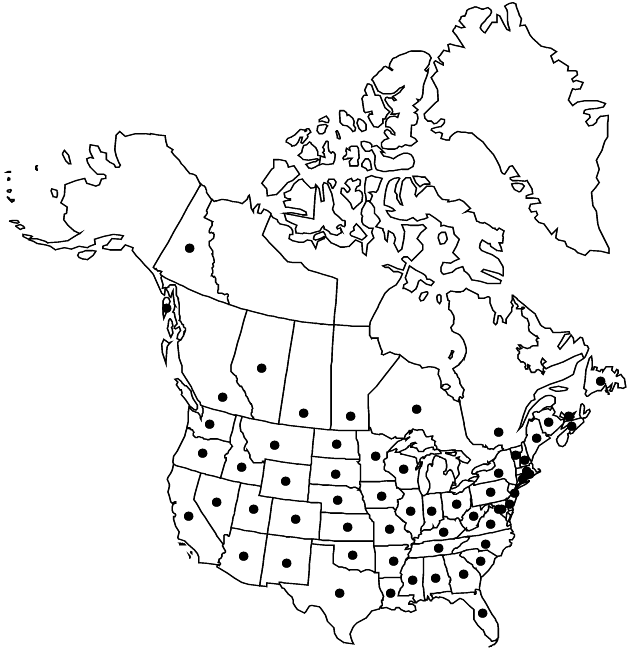Anthemis cotula
Sp. Pl. 2: 894. 1753.
Annuals, (5–)15–35(–90) cm, usually ill-scented. Stems green (sometimes red-tinged), usually erect, branched mostly distally or ± throughout, glabrous, glabrate, puberulent, or sparsely strigillose to strigoso-sericeous (glabrescent, hairs mostly medifixed) and gland-dotted. Leaf blades 25–55 × 15–30 mm, 1–2-pinnately lobed. Peduncles mostly (2–)4–6(–15) cm. Involucres 5–9 mm diam., ± villosulous to arachnose. Receptacles paleate mostly distally; paleae subulate to acerose 2–3+ mm (often gland-dotted). Ray florets 10–15, styliferous and sterile; corollas white, laminae 5–15+ mm. Disc corollas 2–2.5 mm (sparsely gland-dotted). Cypselae 1.3–2 mm, ribs ± tuberculate (furrows often gland-dotted); pappi 0. 2n = 18.
Phenology: Flowering (Apr–)May–Aug(–Oct).
Habitat: Disturbed sites, clearings, fields, roadsides
Elevation: 10–600(–1500+) m
Distribution

Alta., B.C., Man., N.B., Nfld. and Labr. (Nfld.), N.S., Ont., P.E.I., Que., Sask., Yukon, Ala., Alaska, Ariz., Ark., Calif., Colo., Conn., Del., D.C., Fla., Ga., Idaho, Ill., Ind., Iowa, Kans., Ky., La., Maine, Md., Mass., Minn., Miss., Mo., Mont., Nebr., Nev., N.H., N.J., N.Mex., N.Y., N.C., N.Dak., Ohio, Okla., Oreg., Pa., R.I., S.C., S.Dak., Tenn., Tex., Utah, Vt., Va., Wash., W.Va., Wis., Wyo., Eurasia.
Discussion
Anthemis cotula is a weed throughout North America.
Selected References
None.